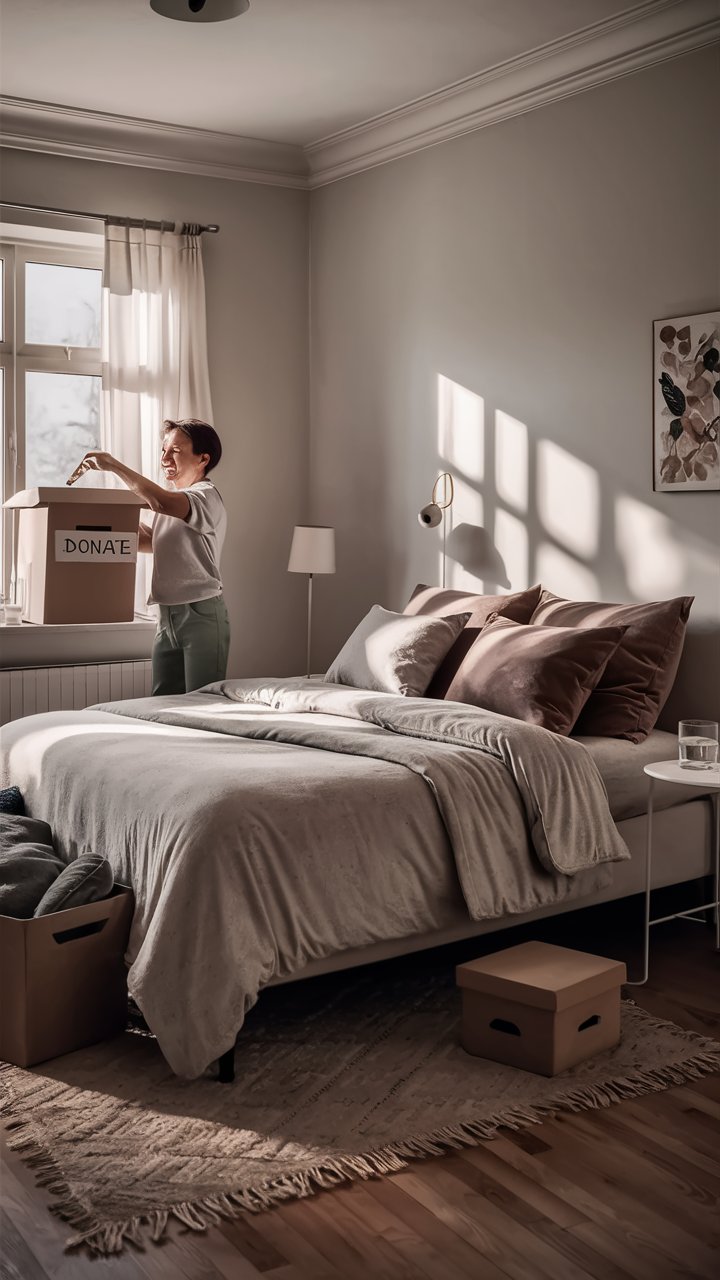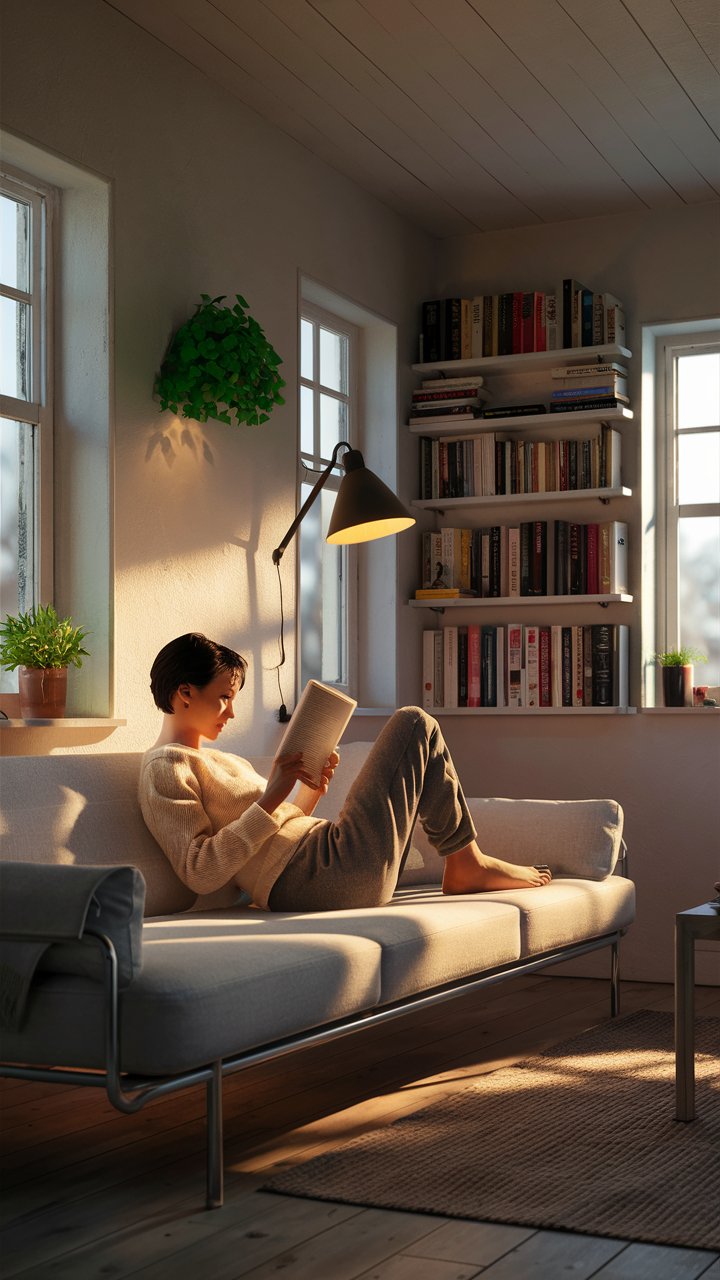Introduction
Embarking on a 30-day minimalism challenge can be a life-changing experience. This structured approach to decluttering and simplifying your life involves progressively getting rid of more items each day, ultimately leading to a significant reduction in clutter. Inspired by the principles of minimalism, this challenge not only helps in creating a tidy living space but also fosters a more intentional lifestyle. Whether you’re looking to start fresh or simply reduce excess belongings, this minimalism challenge offers a practical and achievable method to achieve your goals.
Throughout this guide, you’ll find detailed steps on how to start and maintain your 30-day minimalism challenge. From understanding the basics and setting realistic goals to daily tasks and long-term maintenance, each section provides valuable insights and practical tips. Additionally, we’ve included useful links and resources to support your journey, ensuring you have all the information needed to succeed. By the end of this challenge, you’ll have not only decluttered your home but also embraced a more mindful and simplified way of living.
Key Takeaways
- The 30-day minimalism challenge involves progressively removing more items each day to reduce clutter and simplify your life.
- Setting clear goals and preparing with necessary supplies are crucial for starting the minimalism challenge successfully.
- A structured day-by-day guide helps manage the challenge, ensuring steady progress and avoiding overwhelm.
- Establishing long-term habits and incorporating minimalism into daily routines are key to maintaining a clutter-free lifestyle.
- Engaging with online communities and utilizing useful links and resources provide ongoing support and motivation.
- The challenge fosters a minimalist mindset, promoting intentional living and mindful consumption.
Understanding the 30 Day Minimalism Challenge

The 30-day minimalism challenge is a transformative journey designed to help individuals declutter and simplify their lives. By committing to this challenge, participants focus on removing unnecessary items from their homes, thereby creating more space and reducing mental clutter. The concept revolves around the minimalism challenge framework, where each day, participants progressively get rid of more items, starting with one on day one and increasing the number by one each subsequent day. This structured approach ensures that the decluttering process is manageable and achievable.
Key Points of the 30-Day Minimalism Challenge
| Category | Key Points |
|---|---|
| Daily Item Removal | Gradually increase items removed each day (Day 1: 1 item, Day 2: 2 items, …, Day 30: 30 items) |
| Tips for Success | Start with easy items, use the four-box method (keep, donate, trash, relocate), set daily time limits, be honest about needs, take before-and-after photos |
| Common Challenges | Emotional attachment (focus on benefits, donate items), time constraints (break tasks into small segments), overwhelm (start with small areas) |
| Real-life Testimonials |
“Liberating!” – Sarah T. “Clear my mind.” – John D. “Felt lighter and more in control.” – Emily R. |
| Additional Resources |
Books: “The Life-Changing Magic of Tidying Up” by Marie Kondo, “Minimalism: Live a Meaningful Life” by Joshua Fields Millburn and Ryan Nicodemus Websites: The Minimalists (theminimalists.com), Becoming Minimalist (becomingminimalist.com) Tools: Decluttr (decluttr.com), local donation centers and charity shops |
What is the 30-Day Minimalism Challenge?
At its core, the 30-day minimalism challenge is about embracing simplicity. Inspired by Joshua Fields Millburn and Ryan Nicodemus, this challenge encourages participants to declutter their homes methodically. Each day, for 30 days, you must get rid of one more item than the previous day, culminating in the removal of 465 items by the end of the month. This approach not only helps in creating physical space but also fosters a minimalist mindset, making it easier to let go of possessions that no longer serve a purpose.
Benefits of a 30-Day Minimalism Challenge
Participating in a 30-day minimalism challenge offers numerous benefits. Firstly, it significantly reduces clutter, leading to a more organized and serene living space. This decluttering process can also enhance mental clarity and reduce stress, as a tidy environment often correlates with a clear mind. Additionally, the challenge promotes mindful consumption habits, encouraging individuals to be more intentional about what they bring into their homes. By the end of the month, participants often find themselves enjoying a more simplified, purposeful lifestyle.
How to Start Your 30-Day Minimalism Challenge

Embarking on the 30-day minimalism game requires some preparation to ensure success. Start by setting clear goals for what you hope to achieve, whether it’s to create a more organized space or to foster a minimalist mindset. Having a clear purpose will keep you motivated throughout the month. Additionally, gather necessary supplies like boxes for donations and trash bags for discarded items. Creating a dedicated space to temporarily hold items to be removed can help maintain order as you progress. An interior designer can offer advice on keeping things orderly. Participating in this decluttering challenge will make it easier to get rid of old items you haven’t used. Ultimately, this fresh start will help you feel calm and improve your overall wellbeing.
Tips for Maintaining Motivation During the 30-Day Minimalism Challenge
- Set a Clear Vision: Visualize the end goal of a clutter-free space to stay focused and motivated.
- Reward Yourself: Treat yourself after completing weekly milestones to maintain enthusiasm.
- Find a Minimalism Buddy: Partner with a friend or family member to keep each other accountable.
- Document Your Journey: Keep a journal or take before-and-after photos to track progress and celebrate achievements.
- Stay Positive: Focus on the benefits of minimalism, such as reduced stress, increased clarity, and more free time.
Practical Preparation Tips for the Challenge
- Set Clear Goals: Define what you hope to achieve, whether it’s creating a more organized space or fostering a minimalist mindset.
- Gather Supplies: Prepare boxes for donations and trash bags for discarded items. Set up a dedicated space to temporarily hold items to be removed.
- Mental Preparation: Embrace the mindset of letting go and visualize the benefits of a clutter-free space.
- Identify Key Areas: Determine which areas of your home need the most attention and prioritize them.
- Track Your Progress: Use a jar or list to note each item you discard, providing a sense of accomplishment and motivation.
Preparing for the Challenge
Before beginning the 30-day minimalism challenge, it’s important to mentally and physically prepare. Mentally, embrace the mindset of letting go and visualize the benefits of a clutter-free space. Physically, start by identifying the areas in your home that need the most attention. Gather organizer tools and storage solutions to help you sort through items effectively. Consider setting up a jar or list to track your progress, noting each item you discard. This can provide a sense of accomplishment and keep you motivated throughout the challenge.
Setting Realistic Goals
Setting realistic goals is crucial for the success of your 30-day minimalism challenge. Begin by assessing the current state of your home and identifying key areas that need decluttering. Break down the challenge into smaller, manageable tasks, focusing on one room or category at a time. For example, you might start with the dresser in your bedroom or the dining table in your living room. By setting achievable targets, such as getting rid of one item per day initially, you can build momentum and avoid feeling overwhelmed.
Daily Tasks for the 30-Day Minimalism Challenge

To effectively tackle the 30-day minimalism game, it’s essential to have a structured plan for each day. Begin by creating a list of daily tasks, gradually increasing the number of items you will discard. This day-by-day approach ensures a steady pace and prevents the process from becoming overwhelming. Each day, focus on specific areas of your home, such as the kitchen counters or the junk drawer, to systematically declutter and organize your space. By the end of the challenge, you’ll have significantly reduced your possessions and created a more streamlined environment. This decluttering challenge will help you feel calmer and improve your overall wellbeing. An interior designer can offer advice on interior design tips to maximize your space and keep things orderly.
Day-by-Day Guide
The day-by-day guide is a key component of the 30-day minimalism challenge. On day 1, start by removing a single item that you no longer need. Progressively increase the number of items each day: on day 2, discard two items, on day 3, three items, and so on. By day 30, you will need to get rid of 30 items. This incremental approach helps build a habit of decluttering and makes the task more manageable. Keep track of the items you get rid of each day to monitor your progress and stay motivated.
Common Challenges and How to Overcome Them
During the 30-day minimalism challenge, you may encounter several common challenges. One issue could be the emotional difficulty of parting with sentimental items or mementos. To overcome this, focus on the positive impact of a clutter-free space and consider taking photos of sentimental items before letting them go. Another challenge might be finding the time to declutter daily. Address this by setting aside a specific time each day dedicated to decluttering, even if it’s just 15 minutes. Lastly, if you feel overwhelmed, remind yourself of your initial goals and the benefits of minimalism.
Maintaining Minimalism After the Challenge

Completing the 30-day minimalism challenge is a significant achievement, but maintaining a minimalist lifestyle requires ongoing effort. It’s important to create long-term habits that prevent clutter from accumulating again. This involves being mindful of your purchases and regularly reassessing your possessions. Set up a routine to periodically declutter areas of your home, ensuring that new items do not disrupt the simplicity you’ve achieved. Incorporating these habits, along with a necessity to keep things minimal, will help maintain the benefits of minimalism. Take a trip to clear your mind, and use a pot to symbolize simplicity in your daily life. Remember, this journey is part of Future plc, and all rights reserved.
Creating Long-Term Habits
Establishing long-term habits is crucial to maintaining the results of your 30-day minimalism challenge. One effective strategy is to adopt the “one in, one out” rule, which means for every new item you bring into your home, you must remove an existing item. This prevents excess accumulation and encourages mindful consumption. Additionally, schedule regular decluttering sessions, perhaps monthly or quarterly, to keep your space tidy. Incorporate minimalist principles into your daily routine, such as keeping surfaces clear and immediately putting things away after use. These habits help maintain the minimalist environment you’ve created.
Incorporating Minimalism into Everyday Life
Incorporating minimalism into your everyday life involves more than just decluttering physical spaces. It’s about adopting a mindset that values simplicity and intentionality in all aspects of life. This can include minimizing digital clutter by organizing your email and social media, practicing mindful consumption by carefully considering purchases, and prioritizing experiences over material possessions. Embrace the idea of “less is more” in various areas, from wardrobe choices to meal planning. By integrating minimalism into daily habits, you can sustain the benefits of the 30-day minimalism challenge and enjoy a more intentional, stress-free lifestyle.
“The question of what you want to own is actually the question of how you want to live your life.” – Marie Kondo
Useful Links and Resources for Minimalism
Finding the right resources can greatly enhance your 30-day minimalism challenge. There are numerous books, articles, and online communities dedicated to minimalism that offer valuable tips and insights. For instance, works by Joshua Fields Millburn and Ryan Nicodemus, known as The Minimalists, provide a wealth of information and inspiration. Additionally, joining online groups or subscribing to newsletters focused on minimalism can keep you motivated and connected with like-minded individuals. These resources can provide ongoing support as you continue to embrace a minimalist lifestyle.
Recommended Books and Articles
Several books and articles can serve as excellent guides during your 30-day minimalism challenge. Titles like “The Minimalist Home” by Joshua Becker and “Everything That Remains” by Joshua Fields Millburn and Ryan Nicodemus offer practical advice and personal stories about the benefits of minimalism. Blogs such as Becoming Minimalist and Zen Habits also provide regular content to help you stay on track. These resources cover various aspects of minimalism, from decluttering tips to mindful living strategies, ensuring you have comprehensive support throughout your journey.
Online Communities and Newsletters
Engaging with online communities and subscribing to newsletters can be incredibly beneficial during your 30-day minimalism challenge. Platforms like Reddit have dedicated subreddits such as r/minimalism where you can share your progress, ask for advice, and find inspiration. Facebook groups and minimalist blogs often offer newsletters that deliver regular tips and motivation directly to your inbox. Being part of a community can provide a sense of accountability and camaraderie, making the challenge more enjoyable and sustainable.
- Metal Water Bottle
- Non-insulated Single Wall Stainless Water Bottle
- Steel Water Bottle
- Stainless Steel Water Bottles
- Travel Water Bottle
- 1 Liter Water Bottles
Conclusion
The 30-day minimalism challenge is a transformative journey that can significantly impact your living space and mindset. By progressively decluttering each day, you create a more organized and serene environment. The structured approach of the challenge, combined with setting realistic goals and preparing adequately, ensures that the process is manageable and effective. By the end of the month, you will have successfully gotten rid of 465 items, resulting in a more streamlined and stress-free home. This process not only helps in clearing physical spaces but also fosters mental clarity and a sense of accomplishment.
Maintaining the minimalist lifestyle after the challenge involves adopting long-term habits and integrating minimalism into various aspects of your life. Utilizing useful links and engaging with online communities provide ongoing support, keeping you motivated and connected. Establishing routines, such as the “one in, one out” rule, helps prevent clutter from re-accumulating. Embracing this challenge not only simplifies your physical space but also promotes a more intentional and mindful way of living, ensuring the benefits of minimalism are sustained long-term.

James Dunnington leads the James Dunnington Collection, featuring five unique blogs: a practical Pet Care Guide, an enlightening Ancient History Blog, a resourceful Home Improvement Guide, a cutting-edge Tech Innovation Guide, and a strategic Online Money Making platform. Each site delivers valuable insights designed to empower and inform. For updates and more tips, visit our Contact Us page to sign up for our newsletter, ensuring you never miss out on the latest content from any of these dynamic fields.

